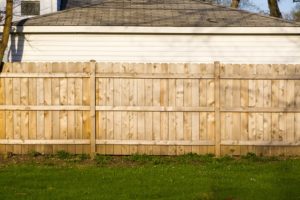
Here are some options to try if you’re worried about fence rot!
If your home has a wooden fence, you should know that rot is the biggest enemy to all wood fencing. It can impact both the look of your fence while also reducing its durability. It’s not always easy to avoid either; wood fencing makes contact with ground soil so much of the time, making rot seem like it’s an inevitability. Don’t worry though. There are so many steps you can take to stop the spread of rot on your home’s wood fencing. Here are some options to try if you’re worried about fence rot!
Wet vs. Dry Rot
There are actually two kinds of rot. Wet rot happens when moisture comes in contact with your wood fencing, typically this happens because your fence is touching the soil beneath it. The result is cracking and softening of the wood accompanied by a damp, musty smell. On the other hand, dry rot happens in very dry climates where the sun and wind end up drying a fence out completely, leaving you with brittle fencing. Dry rot leaves a fence easily broken and it may have a damp smell as well that can happen due to a fence’s decay.
Preventive Steps
When installing wood fencing, consider that there are rot-resistant materials out there. Some of these woods include redwood, cedar, juniper, and cypress. You could also check out treated wood, which doesn’t just help with rot but protects from termites as well. If you want a wooden appearance without the maintenance requirements of wood, you may want to look at alternatives.
Fence Staining
By regularly staining your fence, annually if you can, you can stop rot. Environmental factors may also play a part though. If you’re getting more rainfall and there’s a lot of soil around your fence, it may call for more staining than usual. To test, spray your fence with some water; if it rests on the surface of the wood, the stain is good to go. If it’s absorbed into the wood, you may need a new layer of staining.
Remove Debris
Letting debris pile up is the quickest way to get wood fence rot. Plants, grass, and leaves can all harbor plenty of moisture, and if they’re brushing up against your fence 24/7, they’re pushing that moisture into your fence. Either keep your fence clear of foliage or clean your fence regularly to prevent this problem.
Replace as Needed
If you begin noticing signs of rot, the best thing you can do is replace any affected sections. This may result in replacing the main posts of your fence. You can do this yourself but we’re also happy to come out and make any repairs for you, just be sure to give us a call quickly because rot can spread rapidly.
The post Wood Fencing Rot Prevention Ideas appeared first on Hercules Fence.